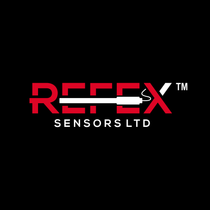About us
REFEX can also delivers OEM sensors, send your inquiry to sales@refex.eu
REFEX...
the new industrial standard
REFEX™ pH Sensors manufacture many varied pH sensor types, for many industrial processes, and for general purpose applications.
Using the unique non porous REFEX™ reference system, we offer the first to last, in quality, long life, low maintenance, stable readings and accurate pH measurements. REFEX™ can fabricate sensors that will retro-fit to your existing systems and housings, we can also manufacture unique sensors for special applications and systems.
We invite enquiries from original equipment manufacturers, and we are always ready to discuss “own label” and special requirements.
pH and ORP (Redox) combined electrodes without Liquid Junction.
Refex is a Hard – Non-Porous – Ionically Conductive Polymeric interface/junction – that has made all porous/open/leaking reference electrodes obsolete.
The polymeric material doubles as an immobilized electrolyte – and more importantly as a protective barrier that separates the process waters from the electrode’s internal Ag/AgCl reference half cell in 2.8 mol/l KCl electrolyte. No Exchange / contact of liquids (process with Ag/AgCl half cell/ electrolyte)
How a revolutionary, almost maintenance free pH Reference was born.
pH measurement is one of the most challenging analytical measurement.
People who are involved have always known this.
The pH analysers have improved beyond recognition. Other innovations like the ISE the ion selective electrode and digital systems like Memosens. millions invested in these New developments.
However, what was neglected was the need for a reliable stable constant mV reference electrode which means a constant reference mV signal as the base line for all electrochemical measurements.
No money was ever invested in reference electrode technology.
The same set-up, the porous Ag AgCl reference half-cell with the KCl electrolyte with the liquid junction, the liquid-to-liquid contact, and exchange between the KCl reference electrolyte and the process.
In terms of measurement stability it is often a tragedy. The standard reference electrode is only mV stable when standing in the same concentration KCl electrolyte on both sides of the porous reference junction Diaphragm. This is the obvious practical reality.
It was this obvious reality that motivated Tim Russell to investigate the options to develop a stable / constant mV reference electrode.
Could it be done electronically ? He looked into this but abandoned this when he realized that the " Schwartz Peter" was this porous leaking Diaphragm. He tried many different things without any success.
But he didn’t give up and one Sunday afternoon he tried something crazy. Something a scientists would never try. Working with different vinyl Ester Resin and different conductive salts and rare earths and catalysts and accelerators. He mixed a strange cocktail of polymeric materials and chemicals.
He poured this cocktail into glass test tubes 14 x 1 x 140 with round base and added an Ag AgCl reference wire into the polymeric matrix. Then he left the filled test tubes in a rack overnight not expecting any success so he just enjoyed Sunday evening with his family.
Next morning he went into his laboratory and noticed that the polymeric matrix had polymerized hardened full hard. Then he placed the filled test tubes into boiling hot water which induced a final curing and contraction and the polymeric rods released from the glass test tube forms. This produced 12 mm diameter concentric rods with an Ag wire coming out of the top.
Still expecting nothing and using crocodile clips with a pH glass electrode and put the two probes into pH buffer 6.88. Instantly the Knick pH laboratory instruments indicated pH 6.88 neutral pH buffer around 0 mV.
After so many earlier tests, pessimistically he thought “will nay work” while rinsing the electrode pair in tap water and put them into pH 4.01. His Scottish wife said " think you might have something" because the Knick pH Meter read instantly pH 4.01 without a mV deviation. Wow!
Getting interested he tried pH 9.18 and the same instant response, exactly pH 9.18 and no deviation.
This was unbelievable. He left 3 sets of pH glass vs these new polymeric reference electrodes in different buffers for days and there was no mV deviation drifting.
The Refex polymeric reference electrode was born " Without Diaphragm" .
He then put the electrode pair in low ionic demin water and checked the conductivity in order to check salt loss from the polymeric matrix. No change in conductivity.
Negligible surface salt loss only and no mV deviation. Also the Pt1000 temperature compensation worked perfectly well.
He was very pleased and convinced that he had made and discovered, by empirical experimentation, a reliable mV stable reference electrode that produced a constant mV in all chemical solutions and waters of different conductivity.
This is a true story !
However, since his discovery, (commercial) war broke out and he made so many enemies and even people he didn't know hated him.
Unfortunately, during the past 42 years since of his invention, big well-known companies delivering pH systems thwarted his break-through invention although it has proven excellent performance under harsh conditions and chemical environments.
Quoting the last sentence of an earlier report, written by three scientists at Bayern-Leverkussen, Professor Dermot Diamond, Dr. Meyer, Dr. Kaiser and Herr Frish:
“We have never tested a reference electrode with such good results” as applied in their most demanding chemical processes.
Tim Russell will never give up, while pH measurement continues to be challenging because of not stable constant reference electrodes that are still causing high maintenance requirements. He has set-up the “Refex” Company and offers operating companies to test the Refex reference at their site.
Shell Global Solutions has earlier tested it at Shell Pernis and accepted the Refex reference electrode.
Decide yourself and make the choice between more stable pH measurements or higher costs for maintenance.
written by DH 2024-07


